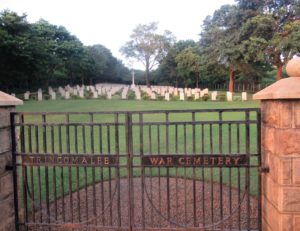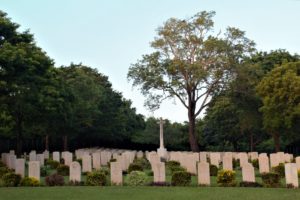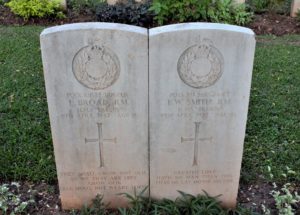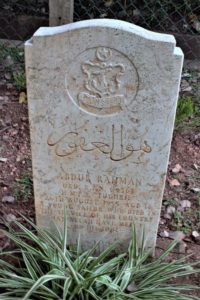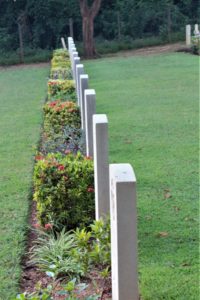The Trincomalee War Cemetery was relatively near our hotel and on the short drive, we passed a man riding a bicycle with “War Graves” written on the back of his grey t-shirt.
The cemetery, one of six in Sri Lanka, is located on a busy roadside and having gone through the gate, we’d just begun looking round, when “bicycle man” arrived.
He said he was one of five caretakers and proved to be a mine of information, with so many facts and figures in his head. He told us how many graves were there, 364, and how many there were for the various nationalities which included not only that of British servicemen but Italian, Dutch and French allied forces.
He got out his mobile and showed us a photograph of a visit by the British High Commissioner and Lord Ahmed of Wimbledon on 19 January, a few days before our visit. He also pointed out a large tree planted by Princess Anne in 1995.
Many of the seamen had been on HMS Erebus during the Japanese air raid on Easter Sunday, 1942. Interestingly there were a few instances where the headstones, of seemingly unconnected people, apart from their date of death, were side by side, rather than with the uniform gap in between. One grave stood alone and in the opposite direction to the others, and commemorated a naval man buried in St Stephen’s Cemetery whose actual grave could not be found.
There was a row commemorating post-war graves, up to 1961, and these belonged to dependents of servicemen and of civilian employees of the Admiralty and their dependents. To denote a post-war grave, a small piece had been removed on each side at the top of the headstone.
At the back of the cemetery were the graves of Hindus and Muslims and again, facing the opposite way, an unknown Burmese.
In the centre was the Cross of Sacrifice and a stone bench for peaceful reflection.
Like other Commonwealth War Graves we’ve visited all over the world, this was immaculately maintained and a great testament to the hard work of the caretakers.
